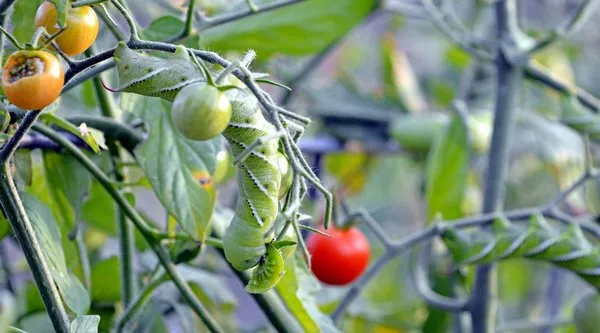Gardening can be a rewarding and therapeutic pursuit, but it’s not without its challenges. One such challenge is dealing with pests that can wreak havoc on your beloved plants. Among these invaders, white pests stand out due to their tenacity and ability to quickly multiply. In this comprehensive guide, we will delve into the world of white pests on plants, explore their types, causes, and the most effective strategies to get rid of them. Armed with this knowledge, you can take decisive action to protect your garden and promote the health and vitality of your plants.
Understanding White Pests: A Closer Look
White pests encompass a range of insects and mites that share a common characteristic: their pale or translucent appearance. These pests can inflict substantial damage to plants by feeding on leaves, stems, and even roots. Their presence not only compromises the aesthetics of your garden but can also weaken plants and make them more susceptible to diseases.
Common Types of White Pests
Several common types of white pests pose a threat to your plants. These include:
1. Whiteflies: Tiny, winged insects that cluster on the undersides of leaves and feed on plant sap, often leading to yellowing leaves, stunted growth, and honeydew secretion.
2. Mealybugs: Small, soft-bodied insects covered in a powdery white substance. They feed on plant sap and can cause wilting, yellowing, and distorted growth.
3. Scale Insects: These pests appear as small, raised bumps on stems and leaves, often covered in a protective waxy shell. They feed on plant sap and can weaken the plant over time.
4. Spider Mites: Microscopic pests that are more closely related to spiders than insects. They feed on plant cells by piercing them and extracting the contents, causing stippling, yellowing, and webbing on the plant’s surface.
Causes of White Pest Infestations
White pests are opportunistic and can infest plants for various reasons:
1. Environmental Stress: Plants that are stressed due to factors like poor soil, inadequate light, or fluctuating temperatures are more susceptible to pest attacks.
2. Poor Air Circulation: Crowded plants with limited air circulation can create a conducive environment for white pests to thrive.
3. Overwatering: Excessive moisture can attract pests and create conditions favorable for fungal growth.
4. Lack of Predators: Natural predators, such as ladybugs and lacewings, help control white pest populations. A lack of these predators can lead to outbreaks.
Effective Strategies for White Pest Control
Combatting white pests requires a multi-pronged approach that addresses both the pests themselves and the underlying causes of infestations. Here are effective strategies to consider:
1. Cultural Practices
Pruning: Regularly remove infested plant parts, such as leaves and stems, to limit the spread of pests.
Isolation: Quarantine new plants before introducing them to your garden to prevent the potential introduction of pests.
Spacing: Properly space plants to promote good air circulation and reduce the likelihood of infestations.
Hygiene: Keep your garden clean by removing fallen leaves, debris, and weeds that can harbor pests.
2. Natural Predators
Introduce Beneficial Insects: Release natural predators like ladybugs, lacewings, and predatory mites into your garden to help control white pest populations.
Attract Birds: Birds are natural predators of many garden pests. Providing bird-friendly habitats can help keep pest populations in check.
3. Mechanical Control
Hose Spray: Use a strong stream of water to physically dislodge pests from plants. Repeat this regularly to prevent reinfestation.
Handpicking: For small infestations, manually remove pests using tweezers or a soft brush.
4. Natural Repellents
Neem Oil: Neem oil is an effective natural insecticide that disrupts the life cycle of pests. Dilute it with water and spray it on your plants.
Garlic Spray: Create a garlic-infused spray by blending garlic cloves and water, then strain and spray it on plants.
5. Chemical Control (As a Last Resort)
Insecticidal Soaps: These soaps suffocate pests upon contact. Choose a product labeled for use on white pests and follow the instructions carefully.
Horticultural Oils: Oils smother pests by coating them. Apply during cool hours to avoid plant damage.
6. Systemic Insecticides
Systemic insecticides: These are absorbed by plants and kill pests when they feed on treated plant tissues. Use with caution and follow label instructions.
Preventing Future Infestations
Prevention is key to maintaining a healthy garden free from white pests:
1 .Monitor Regularly: Regularly inspect your plants for signs of white pest infestations. Early detection makes control easier.
2. Provide Optimal Conditions: Ensure your plants receive the right amount of light, water, and nutrients to minimize stress and vulnerability.
3. Practice Crop Rotation: If feasible, rotate plant types each season to disrupt pest life cycles.
4. Use Resistant Varieties: Select plant varieties known for their resistance to white pests to reduce the risk of infestations.
Conclusion
Managing and eliminating white pests on your plants requires a combination of vigilance, proactive measures, and targeted interventions. By understanding the types of white pests, their causes, and effective control strategies, you can safeguard your garden and ensure the health and beauty of your plants. Whether you choose natural, mechanical, or chemical approaches, remember that consistency and patience are key to achieving long-term success in the battle against white pests. With the right knowledge and a comprehensive approach, you can turn the tide and enjoy a thriving, pest-free garden.


